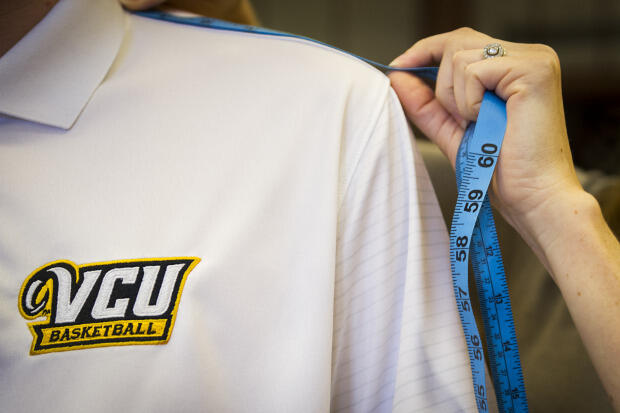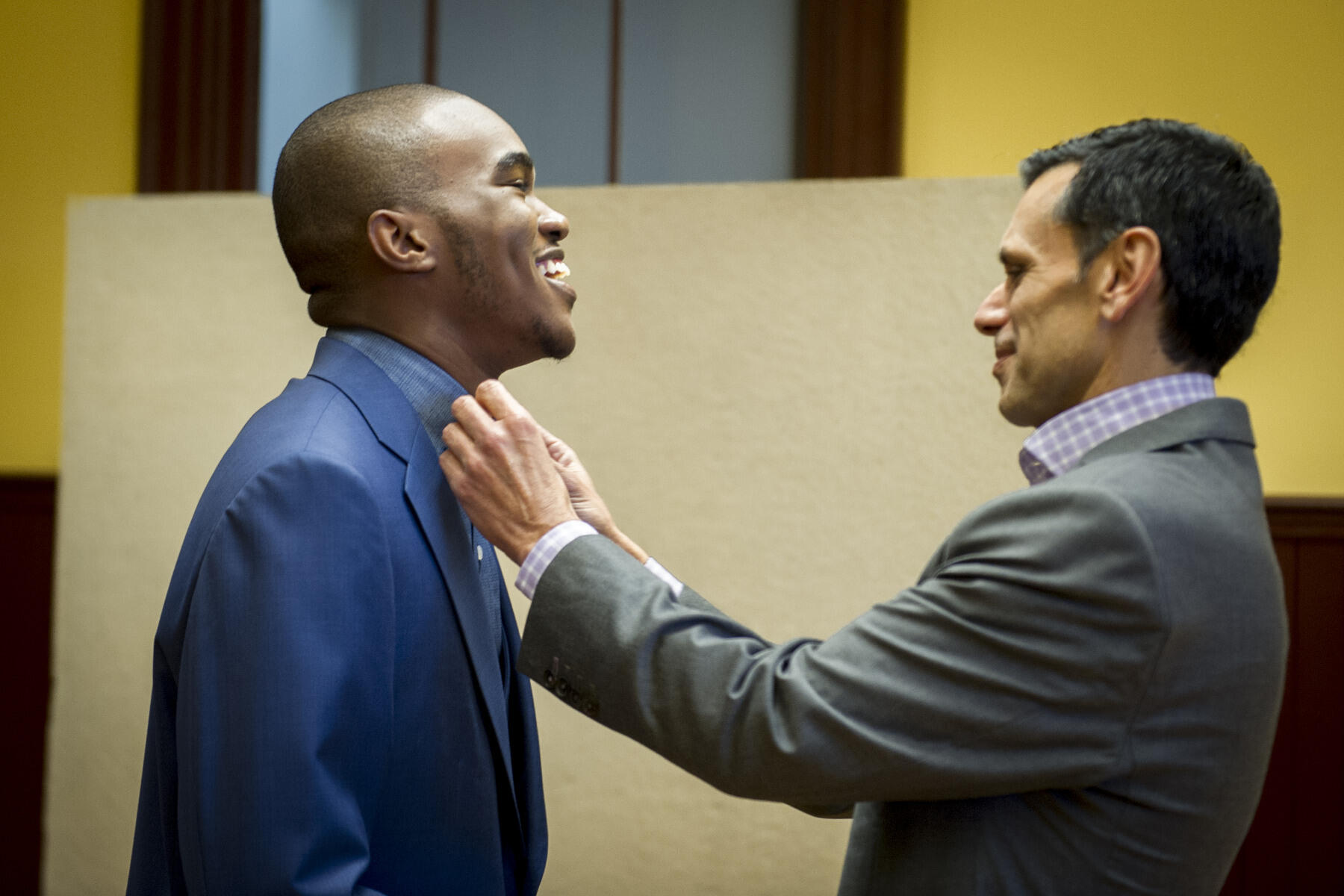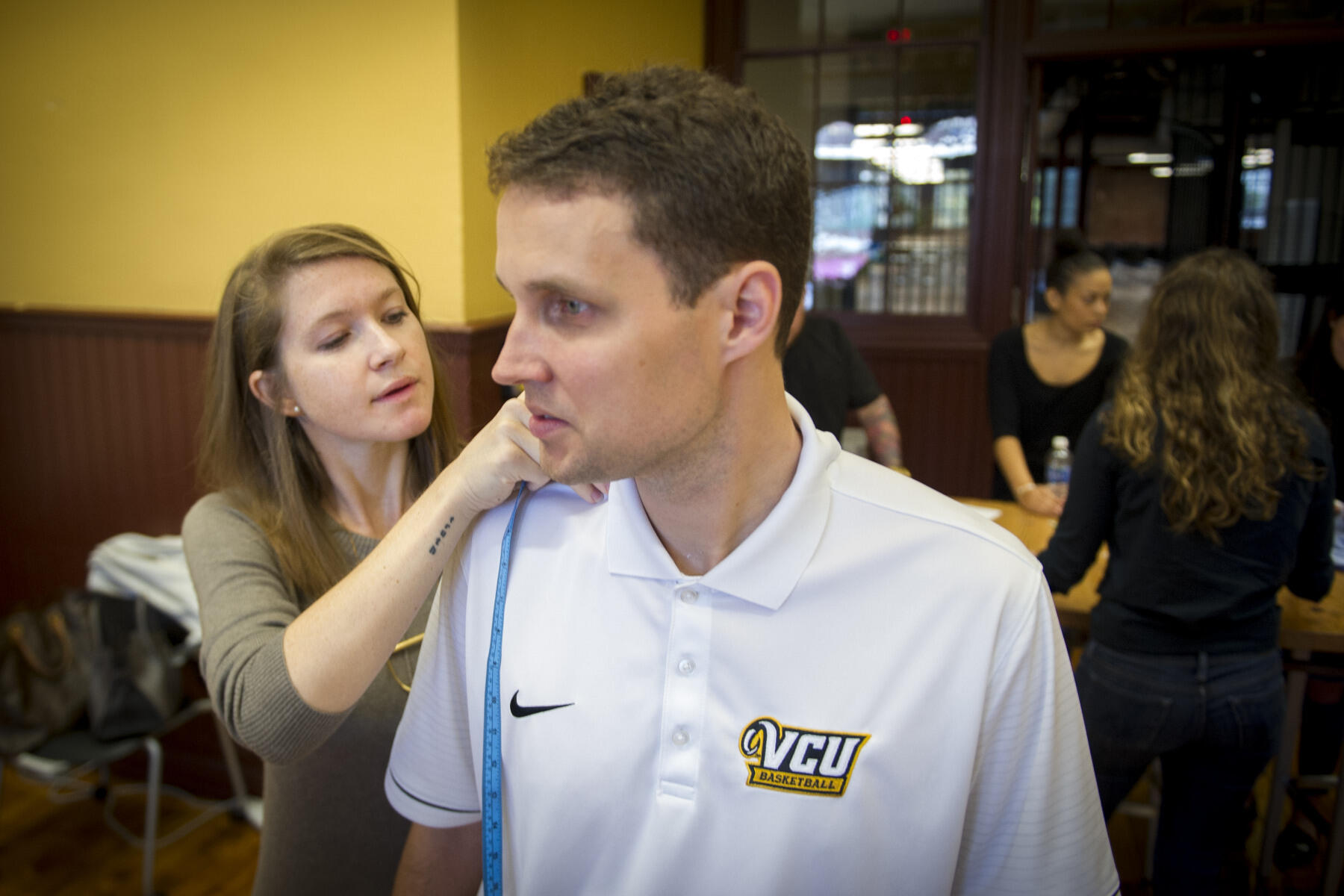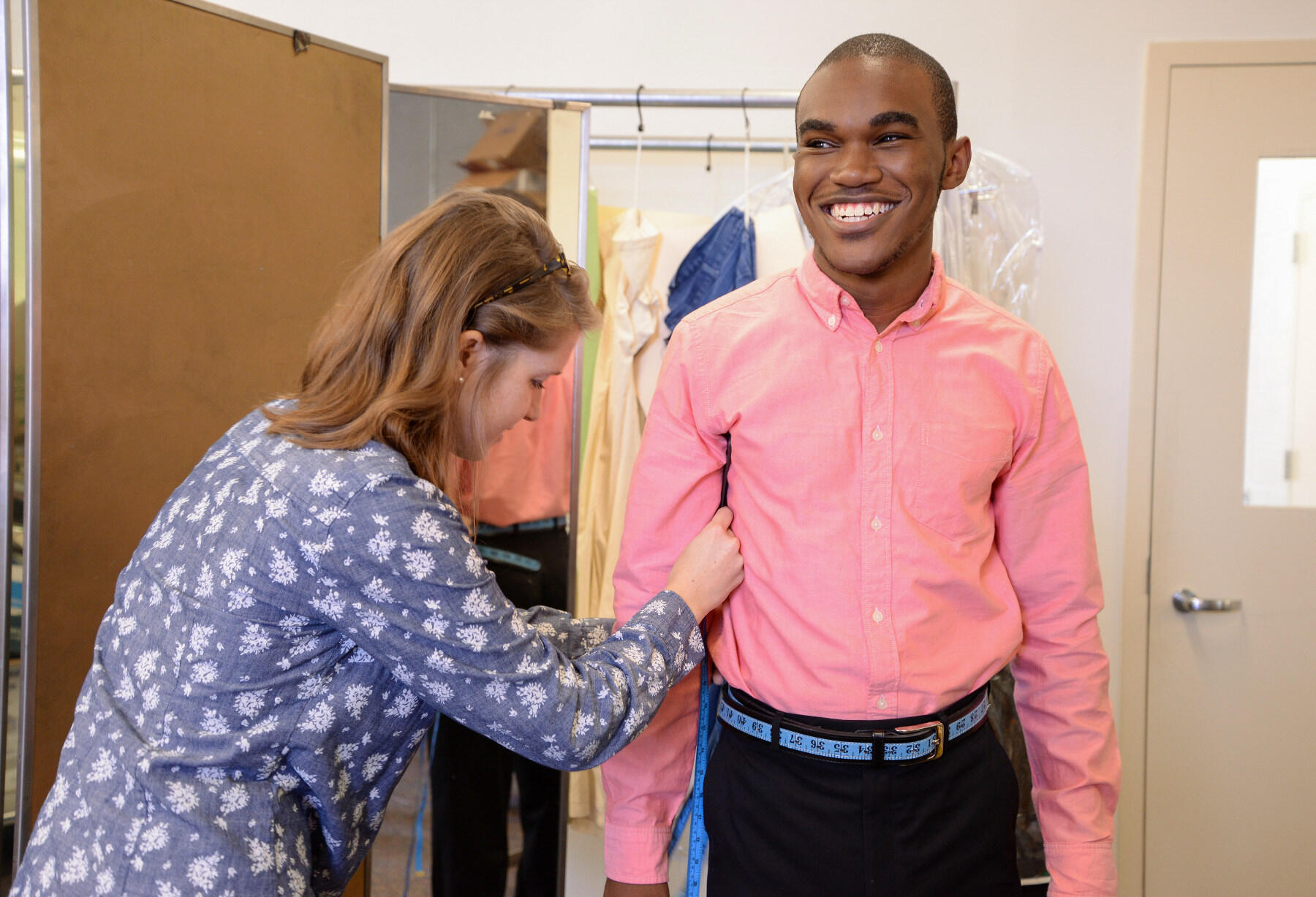
Nov. 22, 2016
Common threads
How do a university president, a basketball coach and a business student up their fashion game? With help from VCU fashion students.
Share this story
Virginia Commonwealth University President Michael Rao, Ph.D., is not afraid to go out of his comfort zone for the sake of students. So when VCU fashion students wanted to outfit him for various work events as part of a special department project, it didn’t take long for him to say yes, despite feeling nervous about being in the fashion spotlight.
“It obviously makes you a little self-conscious … because it’s not your regular role,” he said. “But I do think it’s good for me to have this engagement, this involvement with the students.”
The project stemmed from a conversation that Rao had about a year ago with Patricia Brown, who had just become chair of the Department of Fashion Design and Merchandising in the School of the Arts, about selecting clothes to fit different occasions.
“My wheels started turning after that conversation and I started thinking about how much that is a part of somebody’s job when they’re working within the [fashion] industry,” Brown said. “They’re trying to solve a problem, and they’re trying to offer goods that work together in a way … that is appropriate for various occasions.”

At the time, Brown and other fashion professors had already been thinking about increasing the department’s focus on menswear, an area that has seen faster growth in the past five years than womenswear. “Most design and fashion merchandising programs focus more on womenswear,” Brown said. “I thought that [menswear] was an area that deserved more attention, with this being a good way to start.”
The department is also always looking for ways to bring together the design and merchandising tracks, which work together closely within the industry.

Brown thought it would be a great experience for the students to work together across both tracks to find real-life solutions for men who need to hit the right fashion notes in different career settings. Once she had that idea, she didn’t hesitate to ask Rao to participate. It never even occurred to her that he might decline.
“I thought he would [do it] just because of the interest he seemed to have in both the whole idea of what we and our program do and the interest he has in the students and what they’re learning,” Brown said.
Rao’s wife, an artist, encouraged him.
“She says anything to help the students is a good thing,” Rao said. “So she said, ‘Go have fun but make sure that you really let them do what they need to do so they can learn and be as creative as possible.’ I think she probably knew that I would tend to be a little more conservative.”
In addition to Rao, Brown recruited men’s basketball coach Will Wade and Curtis Holloway, a senior accounting/human resources student in the VCU School of Business.
Wade was shocked when asked to be part of the project because he does not think of himself as the most fashionable guy.
“But I probably need it,” he said of the makeover. “I was just surprised. It was a unique idea. There’s not a lot of schools that have fashion design that could pull all these pieces together. I was surprised, one, that they asked, and, two, that we had all the infrastructure to do this, which was exciting. … I thought it was a great idea and it just showed collaboration across the university, which is what you want.”

Brown, with Kim Guthrie, associate chair of the fashion and merchandising department, and Tammy Davis, professor of merchandising, chose students for the extracurricular project who were interested in menswear and in working in both design and merchandising. They also had to be at the top of their game as far as grades and classwork.
The six students chosen were seniors Noa Bell, Collette Ward and Mason Shuck and sophomore Katherine Manson from the merchandising track and senior Katie Gwynn and sophomore Alexander Sausen from the design side. None were nervous about working with the head of the university or the Rams coach.
“It was like working with your everyday person,” Sausen said. “They’re very down-to-earth and very easy to talk to. It was a pleasure to work with them.”
While designers have the eye for styling and measuring, the merchandisers pick which garments will lay properly on the wearer and display well, Shuck said. They also have to consider each individual’s personality and colors that would look best on them, Sausen added.
“We had to take into consideration their jobs,” Sausen said. “I think that was the main thing. Just because there’s a certain limit to what you can do with someone’s wardrobe. So like with the president of a university, you can’t be too high fashion, too out there. But you also don’t want to make it boring either.”
The students chose attire for three realistic occasions that each model would encounter in his career. They dressed Rao for a formal board meeting, an alumni event and a regular day at the office. Wade was outfitted for a basketball game, a press conference and an alumni barbecue. For Holloway, they chose outfits for a job interview, the regular work environment and casual Friday.
<slideshow id=154 align=center width=400>
It was very much a collaborative effort, aided by the large number of menswear vendors, retailers and creators in the Richmond area, Brown said.
Of particular help was Alton Lane, a men’s custom clothing retailer headquartered in Richmond, whose staff showed the students measuring techniques and taught them how custom men’s clothing is made. The retailer also provided many of the suits.
The students conducted two fittings of the three models before choosing the final attire. At the first fitting Rao, Wade and Holloway brought jackets, pants and shirts that they each thought fit well, which the team then “measured flat” on tables. At the second fitting, the students brought garments lent by area clothiers such as Need Supply, Ledbury and Collared Greens to see how they would look while worn.
<slideshow id=152 align=center width=620>
While the project achieved its purpose of teaching students about collaboration between merchandising and design and how menswear differs from womenswear in terms of measuring and fit, Rao, Wade and Holloway also learned what works well on them and how to determine if a garment fits properly.
“It’s nice. It’s a little more stylish than I’m used to,” Wade said, when trying on a suit at the second fitting. “I tend to be a little more reserved with everything. … It’s been a great experience. Everybody from fashion design has just been tremendous and I’m excited to be a part of it. I’ll definitely pay more attention to what’s in style and the types of pleats, and all that sort of thing. I’ve learned quite a bit.”
<slideshow id=153 align=center width=450>
Brown particularly wanted to work with local businesses or with people who have worked with the fashion department over the years. Local branches of Dillard’s, Brooks Brothers, J.Crew and Banana Republic also provided materials for the project.
“The students and Patricia clearly know what they’re doing,” Rao said. “I have full trust in whatever they do. … I’m incredibly honored that [they] would be interested in working with me, and I hope it’s helpful. I would do anything to help our students.”
Subscribe for free to the weekly VCU News email newsletter at http://newsletter.news.vcu.edu/ and receive a selection of stories, videos, photos, news clips and event listings in your inbox every Thursday.
Subscribe to VCU News
Subscribe to VCU News at newsletter.vcu.edu and receive a selection of stories, videos, photos, news clips and event listings in your inbox.











